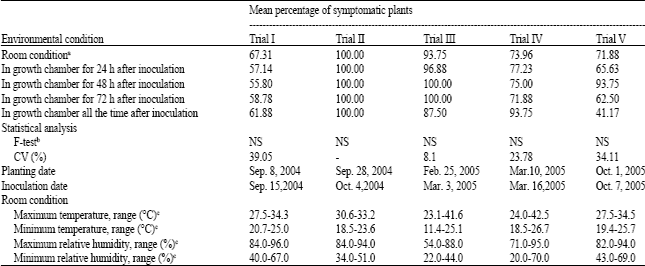Research Article
Effects of Temperature and Relative Humidity on the Effectiveness of Peanut bud necrosis virus Inoculation on Peanut
Program in Plant Production Technology, Faculty of Technology, Udonthani Rajabhat University, Udonthani 41000, Thailand
S. Jogloy
Department of Plant Science and Agricultural Resources, Faculty of Agriculture, Khon Kaen University, Khon Kaen 40002, Thailand
A. Patanothai
Department of Plant Science and Agricultural Resources, Faculty of Agriculture, Khon Kaen University, Khon Kaen 40002, Thailand











Dr Suresh Kunkalikar Reply
Good observation. We too have obtained similar results during our work on GBNV since last 7-8 years at MAHYCO research center, India. In rainy season disease was more on mechanically inoculated plants possibly due to temp of 27-30 dgrees and fairly high humidity.